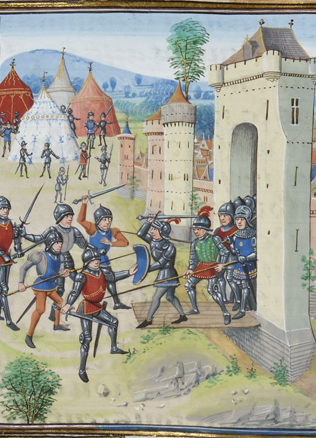How old were the old people of Kernavė?
The results of the archaeological investigation of the 13th and 14th century Kernavė burial grounds allow us to illustrate the urban community of the time through the paleodemographic aspect: the number of inhabitants in the legendary capital, the birth/death rates and the gender structure. It has been established that about 1,570 Kernavė inhabitants could have been buried in the above burial grounds. Prof. Rimantas Jankauskas’ estimates suggest that because of various illnesses and recurrent famine, life at that time, compared to the present times, was not so “sweet.” The average life expectancy was 21 years. About 30% of children born would not reach the age of five. On average, males lived 41 years and women lived 38 years. The difference between male/female mortality rates was conditioned by delivery complications in young females.
Demographic cross-section: after 40 years of age, women have the lead
Among those buried in the Kernavė burial grounds, 15–29-year-old teenagers and adults prevail (31%). Burials of infants and small children under 4 years of age represent 19.52%. This number, however, is too small for the community of those times; most probably, part of children’s burial places had not survived. 5-14-year-old children and adolescents made up 26.2% of the community members, mature 30-40-year-olds represented 21.3%, while the share of the elderly or old, those above 50 years of age, was very small, only 2%. We see, therefore, that in the 14th century Kernavė, old age was seen differently than it is today. Only very few could take pride in reaching a respectable age.
The overall ratio of the deceased men and women shows that the number of women was slightly higher. For 100 women of over 20, there were 89–95 men. This ratio was conditioned by the age group. Thus for 105 men of 20–29 years of age there were 95 women. The ratio changed in favour of women when they were past forty, over their reproduction age (many women died through delivery complications). In the over 50-year-old group, for one man there were 2 women of the same age. However, only about ten “lucky old men” in Kernavė reached this age.
A historical equation: how can the number of inhabitants be estimated?
How many inhabitants could there have been in Kernavė? Their number kept changing. The birth of an urban unit, the time of its prosperity – those were separate stages with different community sizes. The estimates of Prof. Jankauskas witness rapidly expanding reproduction, characteristic of Kernavė population. If all births were to survive, each generation would increase in size 1.6 to 1.9 times. The fertility rate of one woman was 4.8 to 5.6 births out of which only 3.26 to 3.81 reached the age of 15, the beginning of their fertility age.
Knowing the general number of people buried in Kernavė and the average reproduction rates of the population, we can make an estimate of the size of the community. It is important to know the number of generations buried there, which changed every 25 years. We learn from archaeological data and historical sources that the Kernavė burial grounds ceased to be used in 1390. It is probable that the first burials took place in 1290. Therefore, the population of the community buried there consisted, at the final stages of its existence, of 500 people. However, only part of the population was buried in the burial grounds investigated. No graves of the elite or soldiers were found on the site. A couple of years ago archaeologists discovered and investigated yet another burial site in Kernavė, dating back to the 14th century. The bones of the dead burnt there were scattered into Kernavė stream. We cannot estimate how many Kernavė people were burnt there. We know, however, the approximate size of Kernavė: 14 hectares in the Pajauta valley, 10 hectares in the upper terraces of the river and about two hectares in the mound territory. A comprehensively investigated homestead of a craftsman was 0.1 hectares in size. A conclusion can be drawn that in the 14th century Kernavė, there could have been about 260 homesteads of a similar size. According to demographic investigation data, in the Middle Ages the families in Europe and Russia consisted, on average, of six members.
Thus, in the 14th century, Kernavė could have had about 1500 population, among which only about 20 women and 10 men could have exceeded the venerable age of 50.
A small town, even on a medieval scale
The numbers are approximate, yet they allow us to see Kernavė in the context of other European cities of the time. The population of London was about 100,000; Kiev before the Mongol invasion in 1240 had a population of 37,000 to 45,000; 30,000 to 35,000 people lived in Novgorod, and from 20,000 to 30,000 people lived in the centres of other Russian principalities. The cities were surrounded by walls. The size of homesteads was limited and it came up to 0.04 ha. This resulted in a higher concentration of the population – around 100–150 people in one hectare, which is two to three times lower than in the Western Europe cities of the time. In Kernavė, about 60 people lived in one hectare. In its size and population Kernavė was similar to other cities of the Great Duchy of Lithuania located at the upper reaches of the Nemunas river, such as Navahrudak, Slonim, and Vawkavysk.
Gintautas Vėlius



